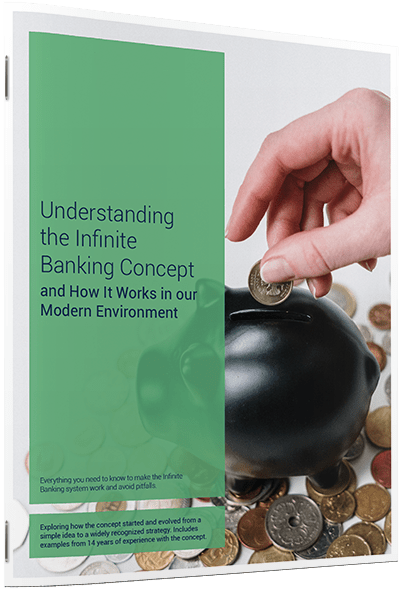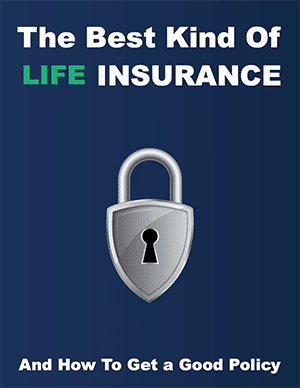702-660-7000
702-660-7000

Nearly seven out of ten people look back at buying their homes and say, “Oops, I wish I hadn’t done that.” Surprising, right? Well, a whopping 68% express regret over their home purchase, mainly because they saw others suffer during the 2008 economic downturn and the following recession, and now they’re like, “Maybe I shouldn’t have jumped into that mortgage.”
In a study conducted by Bank of the West, researchers uncovered a pattern: financial stress is weighing heavily on Americans. After the initial wave of home-buying remorse—a common feeling driven by rising interest rates, surprise expenses, and sometimes regret over timing—the next biggest regrets people shared were entirely about money. Ranked second and third were “paying off debt” and “having enough money to retire without worry.”
These findings speak volumes. More than half of the individuals surveyed admitted they are actively wrestling with debt—credit cards, student loans, mortgages, or a combination of them all. At the same time, nearly half are deeply concerned about whether they’ll be financially secure enough to retire, let alone live the kind of retirement they dream of. That’s not just stressful—it’s paralyzing.
This isn’t a fringe issue. It’s a widespread anxiety affecting families, couples, and individuals from all walks of life. What makes this even more troubling is that these regrets aren’t about poor spending habits or frivolous purchases. They’re about needs: stability, security, and peace of mind.
The truth is, people are waking up to the fact that the traditional financial system isn’t designed to give them freedom. Instead, it keeps them locked in a cycle of repayment, delay, and uncertainty. And while these concerns are real, they don’t have to be permanent.
There are tools—like properly structured whole life insurance and the Infinite Banking Concept—that can change this story. But before any of that can happen, people need to know they’re not alone in feeling stuck, stressed, or unsure of what to do next. Because acknowledging the problem is the first step toward building a better solution.
It’s more than a little ironic that one-third of the people who regret buying their homes actually used their retirement savings to fund the down payment. At the time, it may have felt like the only option—or even a smart move. After all, homeownership has long been considered the cornerstone of the American Dream, a supposed wealth-building milestone. But now, in hindsight, many of these homeowners are facing a harsh reality: “Maybe that wasn’t such a great idea after all.”
And it’s not just a passing feeling—they have valid reasons for their regrets. Tapping into retirement savings early doesn’t just reduce your future nest egg; it can also trigger tax penalties, shrink compound growth potential, and add long-term instability. In exchange, many of these homeowners now find themselves stuck with properties that aren’t appreciating in value fast enough to justify the sacrifice they made.
When it comes to rising home values, only a handful of U.S. cities—places like Dallas, Denver, and Seattle—are managing to outpace or even keep up with inflation. Meanwhile, in much of the country, home price growth has either slowed or stagnated entirely, leaving recent buyers in a difficult spot. They’ve drained retirement savings to purchase an asset that may not deliver the return they hoped for—and in the meantime, they’ve lost time that their retirement investments could have used to grow.
This situation highlights a deeper issue. In a culture where people are pressured to make big financial decisions quickly and without long-term planning, it’s easy to fall into traps. The drive to “buy now or be priced out forever” can overshadow the need to protect future financial stability.
These regrets point to the need for smarter strategies—ones that balance today’s needs with tomorrow’s security. Strategies like whole life insurance, when used wisely, can help people preserve liquidity, build wealth over time, and avoid the kind of short-term thinking that leads to long-term regret.
Because the real dream isn’t just owning a house. It’s having financial peace of mind—and that only comes from decisions that protect the present and the future.
Now, let’s talk about something that often gets tossed around in financial conversations: the idea of calling real estate—especially your primary residence—an “asset purchase.” On paper, it sounds impressive. Emotionally, owning a home carries a lot of weight. It symbolizes stability, success, and in many ways, personal achievement. But when we strip away the sentiment and look at it strictly from an economic standpoint, things start to look a bit different.
The truth is, the value of the property we call home doesn’t always align with what we paid for it—and that’s before considering interest on the mortgage, property taxes, insurance, maintenance, and upgrades. So, does that mean buying a home is a bad decision? Not necessarily. It just means we need to think differently about what kind of “asset” a home really is.
We spend money on plenty of things that don’t retain or increase in value. The cars we drive depreciate the minute we drive them off the lot. The phones in our pockets drop in resale value with every software update. And the groceries we bring home? We consume them, and they’re gone. We’re not investing in food with the hope of turning a profit—we buy it because we need it to live.
In the same way, owning a home serves a purpose beyond financial returns. It provides shelter, security, and a place to build memories. It may not always be a wealth-builder, but that doesn’t make it worthless. That’s where the difference between a lifestyle expense and a financial investment comes in. A home can be both, but if you’re only counting on it to perform like a high-yield asset, you may end up disappointed.
So no, real estate isn’t a bad purchase because it doesn’t always appreciate wildly. It’s all about perspective—and purpose. Recognizing the difference between what adds emotional value to your life and what adds financial value to your portfolio is essential to making sound, balanced financial decisions.
That’s also why tools like whole life insurance often get overlooked. They may not carry the same emotional appeal as homeownership, but they’re purpose-built to deliver value—through guaranteed growth, protection, and liquidity. While everyone is chasing the next big return, sometimes the smartest move is steady, predictable, and strategic—like putting money where it can quietly work for you over time.
The problem isn’t whether real estate is a good investment or not. It’s more about how we’ve been taught what to invest in and what to steer clear of.
Here’s the usual drill:
Step one: Invest your money. You know, buy a house, stash cash in your 401k, maybe dabble in some mutual funds, bonds, or stocks.
Step two: Tackle your debt. Try to pay off that mortgage faster, kick in more than just the bare minimum to your 401k, and keep an eye out for those sneaky credit card fees and interest rates.
Step three: Save whatever you can. Every penny counts.
And finally, step four: Protect what you’ve got. Insurance, rainy day funds, the whole nine yards.
Sounds like a solid plan, right? Well, it can be, if the market is bullish, you have a steady income for life and don’t encounter any of the unexpected curveballs like health crises, divorces or lawsuits. But historically, this is NOT what usually happens.
The market is volatile. Most people change careers 5-7 times during their working life. Those who don’t determine what to save early on, or aren’t disciplined enough to save the amount determined upon, find Parkinson’s Law will prevent them from saving enough. And those who do save, and build a large enough nest egg, all too often see their savings destroyed through tragic events like the market corrections of 2001 or 2008.

Understanding the Infinite Banking Concept and How It Works In Our Modern Environment 31-page eBook from McFie Insurance Order here>
So, here’s a different approach to personal finance—one that flips the script on the traditional narrative you’ve probably heard over and over again. Instead of diving headfirst into saving and investing from day one, consider a smarter sequence: protect first, save second, and invest last.
Start by protecting what you already have. That means putting safeguards in place to make sure your income, your health, and your loved ones are covered if life throws you a curveball—and it will. Life insurance, especially whole life insurance, is a key part of that protection. It’s not glamorous, but it provides certainty. You don’t have to cross your fingers and hope it pays off someday. You know it will. That’s real peace of mind—and a crucial first step.
Once you’ve handled protection, then focus on building up savings. This is your buffer, your safety net. It gives you breathing room and reduces the likelihood that you’ll need to rack up high-interest debt when an emergency hits. And if your savings are structured the right way—through a properly designed whole life policy, for example—they can offer not only safety and access but also consistent, compounding growth.
Next comes debt reduction. By taking a consistent approach to paying off debt, you begin to free up your cash flow. And cash flow is king. The more control you have over your monthly money, the more flexibility and confidence you have to make better long-term decisions.
Only after you’ve established protection, built savings, and cleaned up your liabilities should you seriously consider investing. Why? Because now you’re on solid footing. You’re no longer trying to build wealth on a shaky foundation. You’re building from a place of strength—not fear or pressure—and that’s the difference between financial stability and just winging it.
This new order of operations—protect, save, then invest—puts you back in control. It’s not flashy. It’s not what the media or mainstream advisors always promote. But it’s what works. It’s how you build a secure financial future that lasts.
Steps to building Financial Security:
Now, let’s focus on safeguarding your most valuable asset and finding the best place to save for maximum benefit. Ever wondered what the big shots in finance use? It’s often Participating Whole Life Insurance. And while you may not be a millionaire or billionaire (yet), what works for these folks can work for you too… just on a smaller scale. Millionaires and billionaire don’t overlook the fact that everything they’ve worked for could vanish in an instant if it’s not protected. A well designed Participating Whole Life insurance policy offers exactly that type of protection along with the guarantee that your money will be available and accessible to you at anytime, for anything. That’s why smart money managers will never tell you Participating Whole Life Insurance is a bad investment.

Get a working knowledge of how each type of life insurance policy works.
After reading this 10-page booklet you'll know more about life insurance than most insurance agents.
Download here>
You might be thinking, “But isn’t life insurance just for when I kick the bucket?” Well, yes and no. When designed well, Participating Whole Life Insurance, can build up some serious cash value right off the bat, giving you access to capital you can use to make life better for those you love right now, and a guaranteed, secure way to save for your future. With this design you get the best of both worlds…a high cash value initially and then later on, when you’re more likely to die, a high death benefit for the ones you love.
So, don’t overlook the power of Participating Whole Life Insurance. It’s not just about planning for the future – it’s about protecting what you’ve got right now and setting yourself up for financial success down the line.
 Tomas P. McFie DC PhD
Tomas P. McFie DC PhD
Tom McFie is the founder of McFie Insurance and co-host of the WealthTalks podcast which helps people keep more of the money they make, so they can have financial peace of mind. He has reviewed 1000s of whole life insurance policies and has practiced the Infinite Banking Concept for nearly 20 years, making him one of the foremost experts on achieving financial peace of mind. His latest book, A Biblical Guide to Personal Finance, can be purchased here.
Get a free quote on Life Insurance Enter ZIP Code to Start »